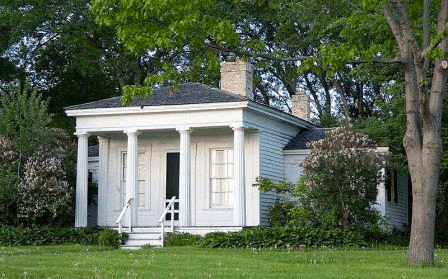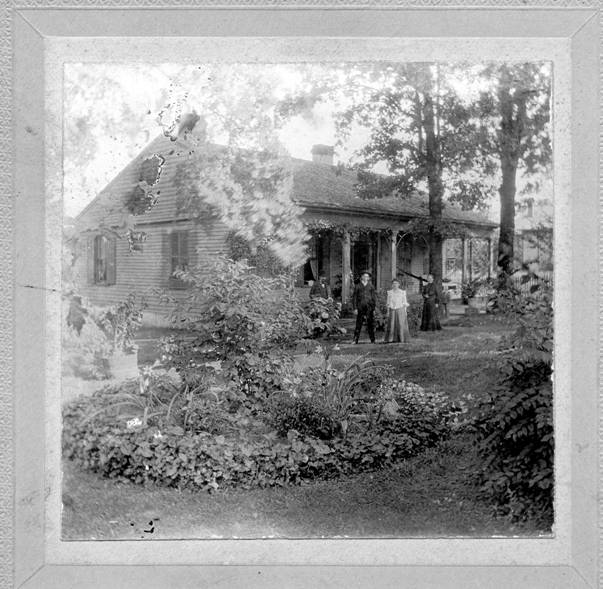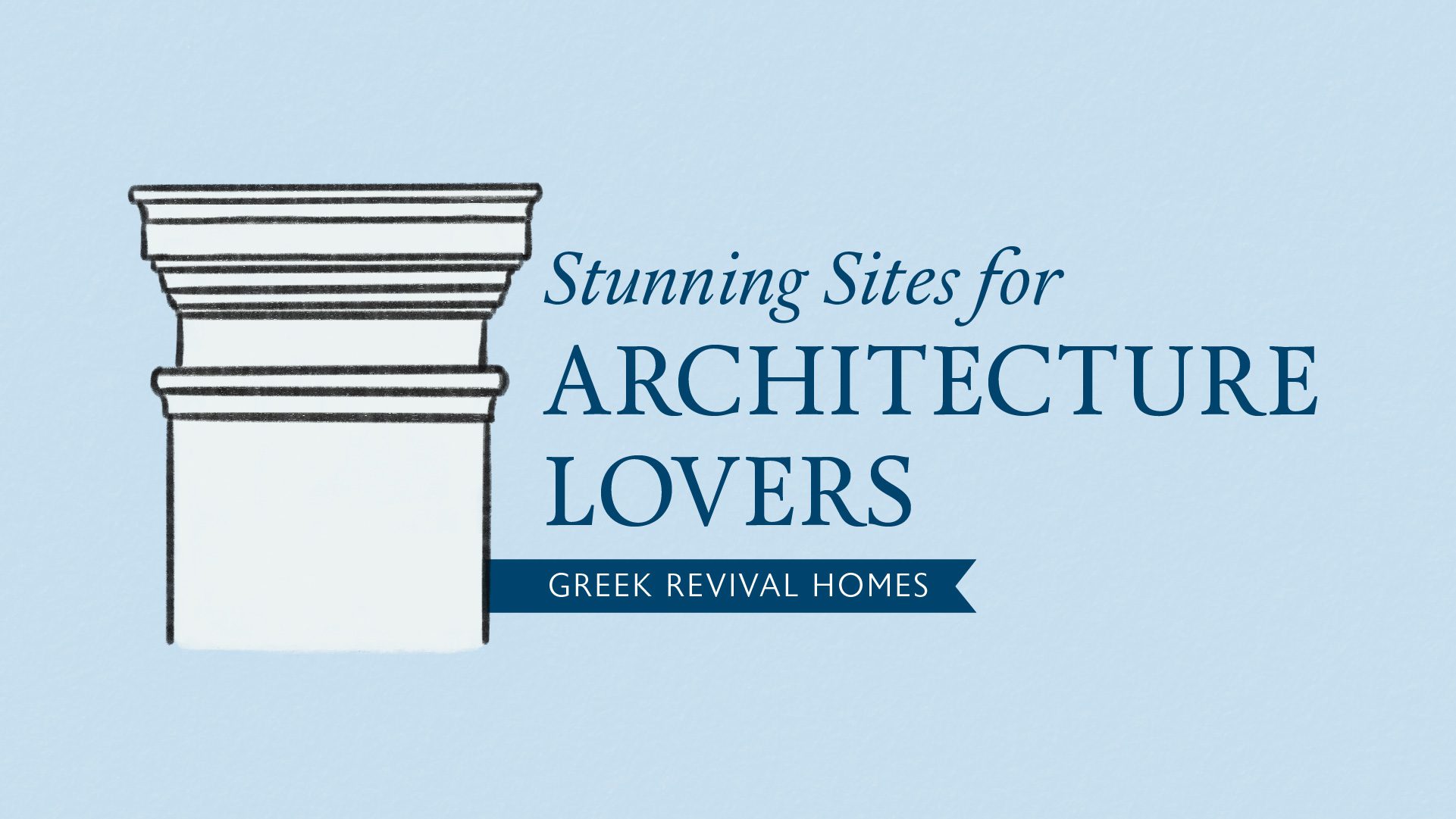
Get ready to experience a curated selection of Greek Revival homes to satiate your hunger for stunning architecture!
As preservers of American buildings, the National Society of the Colonial Dames of America has saved their fair share of Greek Revival homes. Let’s explore early-nineteenth American history with a tour of the Great American Treasures that reflect Greek Revival architecture.
In this guide, we’ll cover:
- Kilbournetown House in Shorewood, WI
- Clarke-Ford House Museum in Chicago, IL
- Craik-Patton House in Charleston, WV
- The Oaks House Museum in Jackson, MS
Easy Listening For Your Journey to Greek Revival Homes
- Milwaukee, Here I Come – Dolly Parton, Porter Wagoner
- Wisconsin Polka – Markic & Zagger Orchestra
- Wisconsin Small Town Polka – Mr. Blink
- My Kind of Town – Frank Sinatra
- Mannish Boy – Muddy Waters
- Sweet Home Chicago – Robert Johnson
- Take Me Home, Country Roads – John Denver
- My Little Home in West Virginia – Bill Emerson
- West Virginia Line – Cumberland Gap Connection
- Mississippi – The Cactus Blossoms
- Miss Maybelle – R.L. Burnside
- Laughing to Keep from Crying – Mississippi Joe Collicott
Kilbourntown House – Shorewood, WI

Kilbourntown House was built by Benjamin Church, a carpenter from New York who moved to Wisconsin in the 1840s, the height of the Greek Revival architectural movement. It’s clear that Church valued Greek Revival architecture as his house follows the classic formula: fluted, Doric columns, triangular pediment, and symmetrical façade.
Although the house did not house anyone particularly powerful or important, the little home was such a fine example of Greek Revival architecture that it was saved from demolition in the 1930s and moved to a new location. Thanks to the hard work of these preservationists, the Kilbourntown House is now the oldest surviving house in Milwaukee. Admission is free, and the house is open in the afternoons on Sundays from June through September.
Things to Do Nearby:
- Villa Terrace Decorative Arts Museum – Historic lakefront villa showcasing fine & decorative arts from the 15th to 18th centuries.
- Black Cat Alley – Outdoor gallery in an urban alleyway featuring huge, colorful murals by diverse global artists.
- Milwaukee River Greenway – Restored riverfront area featuring multi-use trails, kayaking, picnic tables, and lots of green space.
Places to Eat:
- Benji’s Deli – Charming diner serving classic deli favorites
- SALA – Modern Sicilian Dining – Destination for Sicilian pasta & pizzas in a red-walled, art-rich space with a patio.
- Café Corazón – Colorful eatery serving locally sourced Mexican fare.
Podcast:
- This is Milwaukee’s Oldest House – A little back story on Milwaukee’s oldest original house.
Clarke-Ford House Museum – Chicago, IL
 Back in the 1820s, “Chicago wasn’t anything more than a glorified mudhole, but a perfectly located mudhole for a country that was growing west,” says Chicago cultural historian Tim Samuelson. When Henry B. and Caroline Palmer Clark arrived in Chicago, a place that was still mostly prairie at that point, they had plans to make their home a statement of not only their wealth and importance but also the future success that they believed Chicago would have. What better style could they choose than Greek Revival?
Back in the 1820s, “Chicago wasn’t anything more than a glorified mudhole, but a perfectly located mudhole for a country that was growing west,” says Chicago cultural historian Tim Samuelson. When Henry B. and Caroline Palmer Clark arrived in Chicago, a place that was still mostly prairie at that point, they had plans to make their home a statement of not only their wealth and importance but also the future success that they believed Chicago would have. What better style could they choose than Greek Revival?
Constructed over the course of two years and actually never fully finished, the Clark-Ford House still stands today as Chicago’s oldest house. The Greek Revival aspects of the home are unmistakable. In fact, no one would blame you for thinking this home was a Greek temple with its grand staircase entrance beneath a pediment resting on four substantial columns. Like so many Greek Revival homes, this house also features wooden clapboard siding that’s been whitewashed to make it look like marble. As of September 2022, the house is closed for renovations, but that won’t stop you from reveling in the beautiful Greek Revival architecture from the outside in the meantime!
Things to Do Nearby:
- Glessner House – Docent-led tours of a landmark 19th-century house & Chicago’s oldest building.
- Field Museum – State-of-the-art museum of science & invention, with the world’s largest Tyrannosaurus Rex (kid-friendly)
- Jane Addams Hull-House Museum – Mansion where Jane Addams began the settlement-house movement & now a museum with exhibits & tours
Places to Eat
- Wentworth Seafood House – Seafood-focused Cantonese dishes along with bubble tea served in an easygoing atmosphere.
- Ricobene’s – Old-school pizza parlor serving a famous breaded steak sandwich alongside pizza & Italian standards.
- The Burger Point – All-natural burgers, wings & chili with gourmet garnishes ordered via iPads & made while you wait.
Digital Tour:
- Clarke House Museum Digital Tour – Join Chicago’s cultural historian Tim Samuelson on a virtual tourof Chicago’s oldest house, the Clarke House Museum.
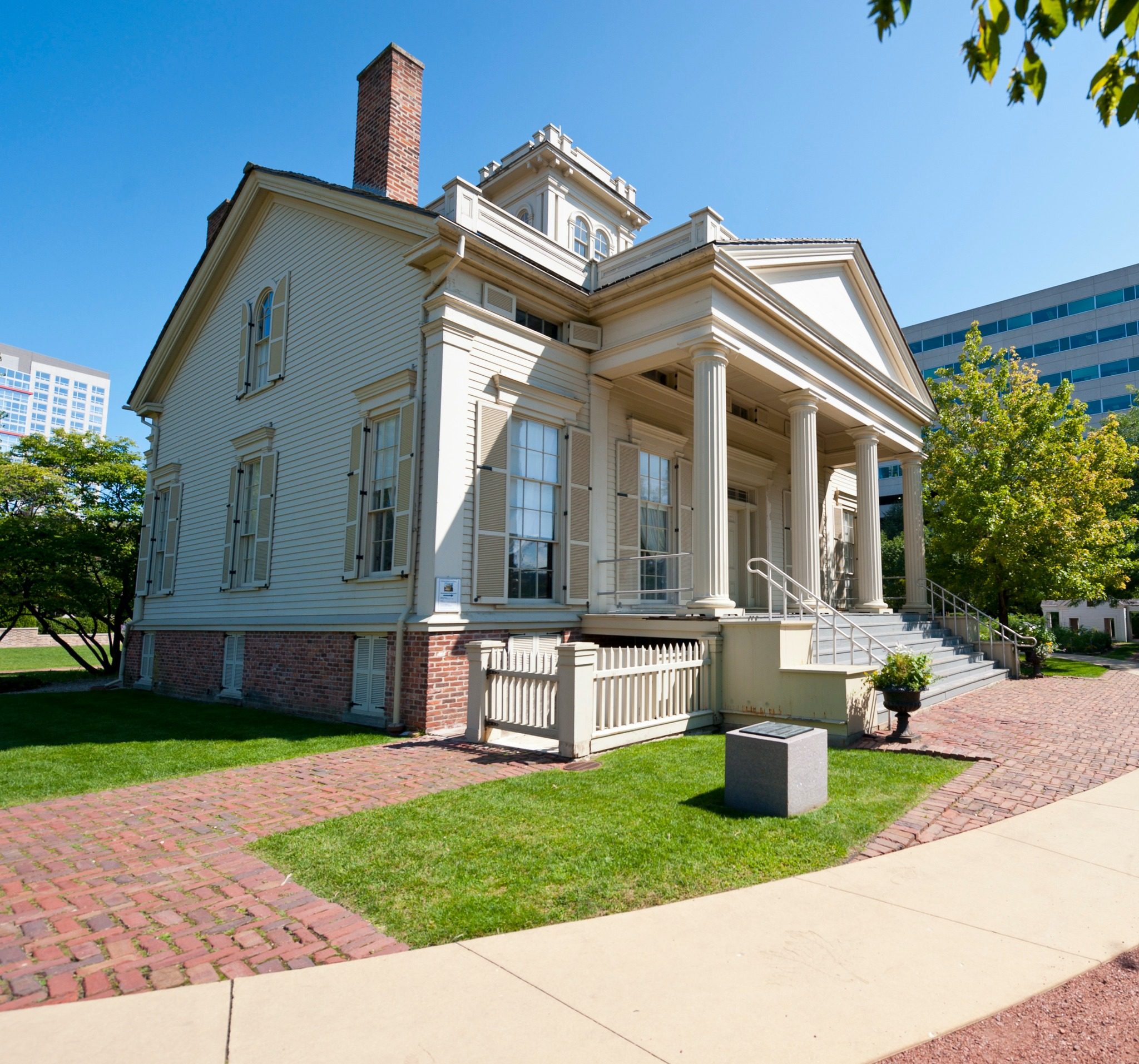
Craik-Patton House – Charleston, WV
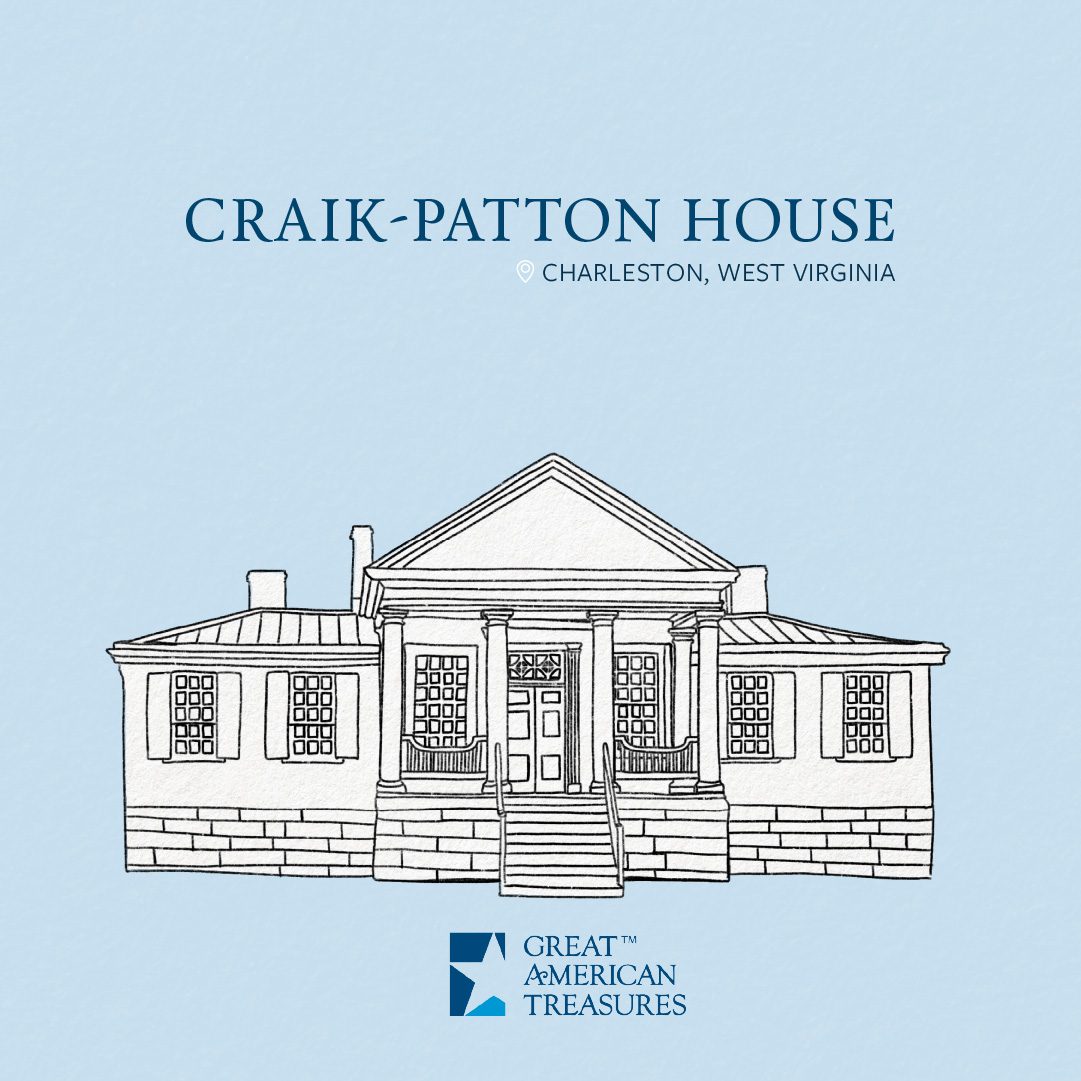
Even though West Virginia is known more for its rolling hills than anything else, one of the finest examples of Greek Revival architecture exists in the state’s capital, Charleston.
The Craik-Patton House was built in downtown Charleston in 1834 by lawyer James Craik, whose dad had been George Washington’s personal secretary and whose grandfather was Washington’s personal physician. With his family connections, it’s no wonder that James Craik hoped his home would reflect the ideals of American democracy, even in a town as secluded as Charleston.
The lawyer and amateur architect lived in the home, which he named Elm Grove, with his wife and eleven children. The home features four large columns that support the extended center roof, a door with three symmetrical windows on each side, and a central staircase. After living there for a decade, Craik moved to Lexington, Kentucky, to pursue work in the Episcopal Church, but his appreciation for and commitment to Greek Revival architecture can still be seen today. The house is open to the public from 10 am – 12 pm & 1 pm – 4 pm Monday through Friday and over the weekend by appointment. The staff suggests calling ahead to book your tour, which is free!
Things to Do Nearby:
- WV State Museum & Culture Center – A renovated museum with art & exhibitions celebrating West Virginia’s history & culture.
- Avampato Discovery Museum – Family-friendly museum with a variety of fine arts & science-related exhibits plus hands-on play.
- Haddad River Front Park – Walk along the Kanawha River and enjoy the mountain scenery
Places to Eat:
- Laury’s Restaurant – American dishes inspired by French recipes come in a luxe room with views of downtown & the river.
- Pie’s and Pints – Pizzeria chain offering an array of craft beers, plus specialty pizzas, salads & sandwiches.
- Swiftwater Cafe – Laid-back diner serving up classic daytime eats, including eggs, bacon, sandwiches & salads.
Digital Tour:
- Craik-Patton House Tour – A guided tour of the history of the Craik-Patton House in Charleston, West Virginia.
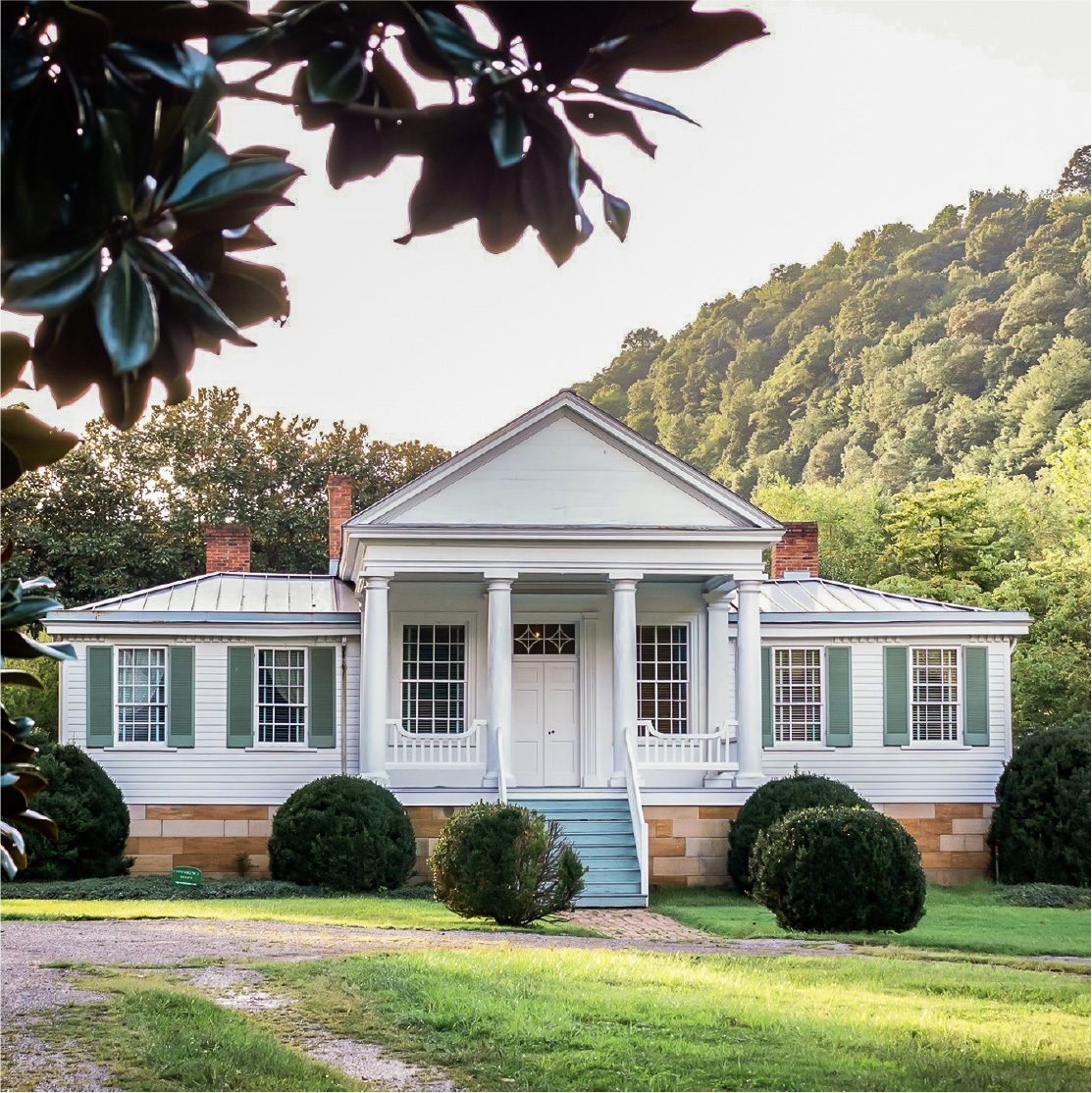
The Oaks House Museum – Jackson, MS
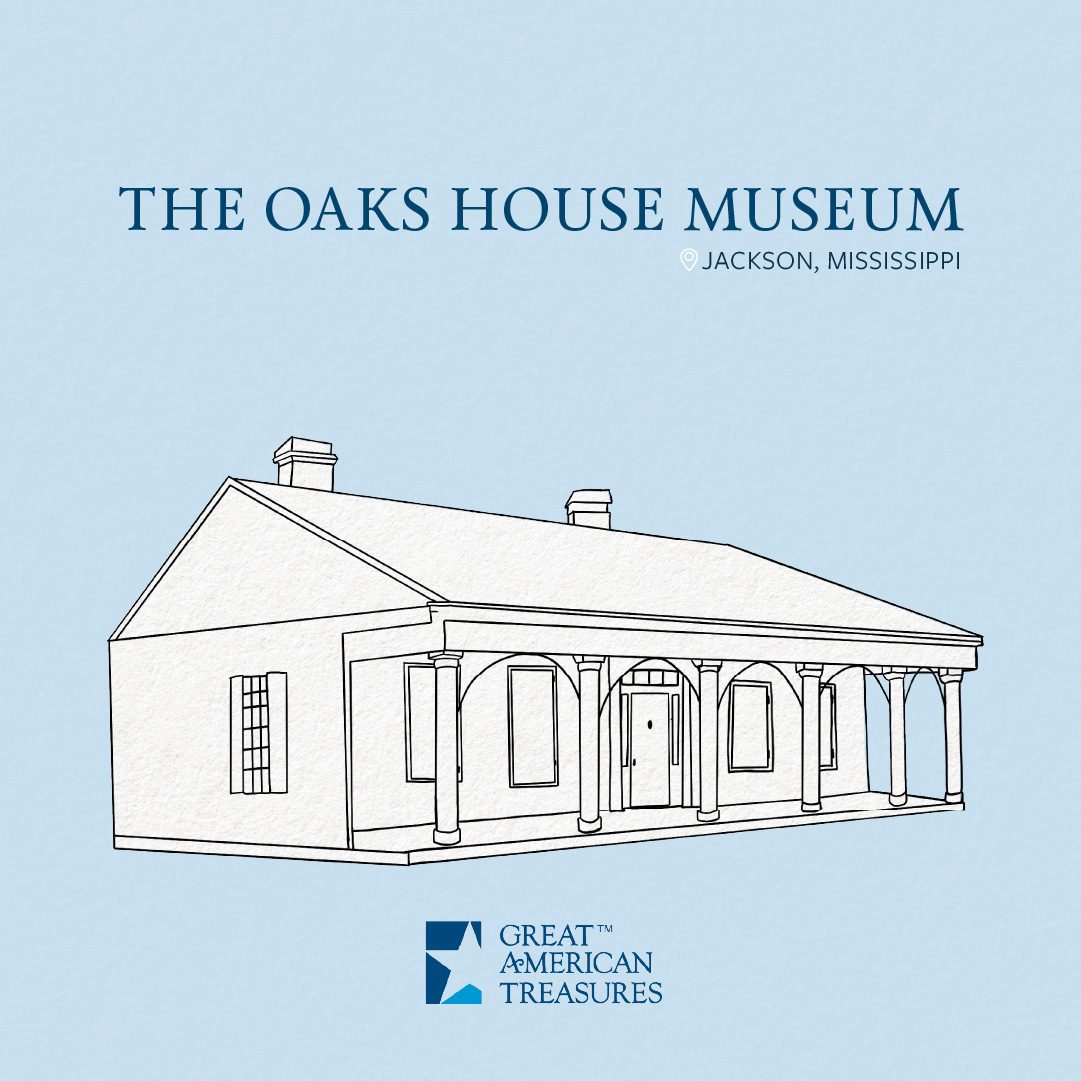 Though not quite as large as the other houses on this list, The Oaks House Museum in Jackson, Mississippi, shows how architects and homeowners adapted Greek Architecture to fit their needs, in this case, a small cottage. Large windows flank a central front door, and the front of the house is adorned with simple columns. The house was constructed for James H. Boyd, Eliza Ellis Boyd, their six children, and numerous grandchildren.
Though not quite as large as the other houses on this list, The Oaks House Museum in Jackson, Mississippi, shows how architects and homeowners adapted Greek Architecture to fit their needs, in this case, a small cottage. Large windows flank a central front door, and the front of the house is adorned with simple columns. The house was constructed for James H. Boyd, Eliza Ellis Boyd, their six children, and numerous grandchildren.
Spared from the burning of Jackson during the Civil War, perhaps because Boyd was an alderman of Jackson at the time or maybe because the structure was an unassuming and modest residence, The Oaks House Museum is now one of the oldest structures in the city. The house is open for visitors on Tuesdays and Fridays from 10 am to 3 pm. The cost of admission is $4.50 for adults, $3.50 for children, and $4.00 for adults over the age of 65. Feel free to reach out to the staff to arrange your own tour!
Things to Do Nearby
- Old Capitol Museum – Museum in circa-1839 capitol focusing on the role of government & historic preservation.
- Mississippi Museum of Art – State’s largest art museum with galleries, cafe, and outdoor garden.
- Mississippi Civil Rights Museum – History museum with interactive galleries exploring the state’s role in the civil rights movement.
Places to Eat
- Elvie’s – Relaxed venue fixing up brunch staples & local eats with a French twist
- Sugar’s Place – Hearty plates of soul food served at a counter
- Basil’s Downtown – Italian cafe serving panini, pasta dishes & housemade desserts in a relaxed environment.
Historical Podcast
- The Flag and the Fury – Learn the history of the redesign of the Mississippi state flag.
Continue Your Journey Amongst Greek Revival Architecture
It’s time to go out and explore these Greek Revival treasures for yourself! And when you’re done touring these stately homes, you’ll want to check out our guide to Greek Revival Mansions and Plantations for another American architectural odyssey!
Whether you’re a history buff, an architecture enthusiast, or just someone who appreciates beautiful buildings, there’s no better way to experience Greek Revival architecture than by visiting some of its iconic structures. So why wait? Create your next Greek Revival adventure and explore more Greek Revival destinations with Great American Treasures.
